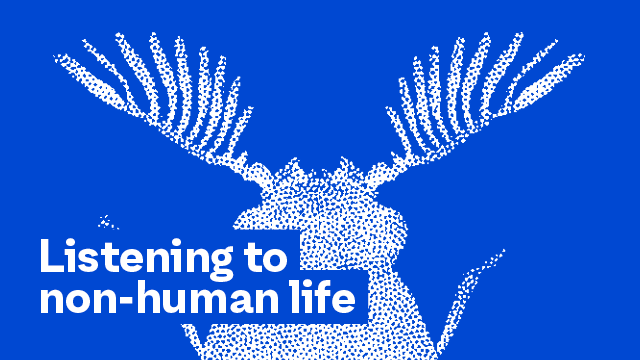Crafting a sonic urbanism: listening to non-human life
Watch on replay
COLLOQUIUM STREAM
PERFORMANCE STREAM
Attention is turning more and more to urban sound as a material to design with, as a site of conflict, as a medium through which to understand the urban environment, and so on. Crafting a sonic urbanism seeks to look beyond the soundscape as an object and bring together research and creative practice that reveals how sonic concerns and methods could shed new light on political, cultural, and social formations in the city.
For the 2nd year we are collaborating with the Institut de recherche interdisciplinaire sur des enjeux sociaux (IRIS, EHESS) to ask how a focus on sound can open up new questions within city-making, and new ways of addressing those questions. Looking beyond soundscape itself as a product of urban life, we aim to map out contemporary practices that think through sonic concerns to reveal other urban phenomena, and work through sonic methodologies to intervene in them.
Listening to non-human life
For this new edition taking place on Gaîté Lyrique’s new online platform Plein Écran, we’ve selected 28 participants that will present work and research projects, showing what can be learned by listening beyond human voices to the ways that animals, plants, and indeed other forms of non-human life make themselves heard. In line with the aims of Crafting a Sonic Urbanism, we are interested less in the soundscapes produced by non-human lifeforms as end points in themselves, than we are in how design and research approaches informed by acoustic methodologies might help understand and stimulate interspecies cohabitation in cities.
In an urbanising world, urbanism becomes the study of reality itself, and requires therefore the greatest possible range of means and collaborators for imagining and enacting situations that can sustain both human and non-human life. Buildings and physical infrastructures are not enough – we also need new imaginative and cultural infrastructures to transform cities and the ways we live in them into sustainable habitats for a multitude of species. Currently, the value of ‘nature’ to human life in cities is mostly framed in terms of psychological impact, disaster mitigation (green infrastructures against flooding or overheating, for example), and the creation of spaces for leisure or aesthetic consumption – parks and gardens.
However, the lifeforms used in these ways are not usually considered constituents: non-human lifeforms are rarely considered to have ‘voices’ within the public sphere. They are however active communicators – through sounds, chemical signals, electromagnetic waves and active agents in the production of urban habitat. How can we be in dialogue with these modes of communication and production, and how being so transform our (humans) own city-making processes?
Programme
Times shown at CET (Paris)
09.30 – 10.00 — Welcome and opening remarks
John Bingham-Hall
Director
Theatrum Mundi
Arnaud Esquerre
Director
IRIS (EHESS)
10.00 – 11.30 — NON-HUMAN VOICES
Nuno da Luz
Artist
→ Echopolitics for interspecies resistance
Ahmed bin Shabib, Rashid bin Shabib
→ Magnetic Reception
Sepideh Karami & Elahe Karimnia
ESALA, Edinburgh School of Architecture & Landscape Architecture & Theatrum Mundi
→ When Parrots of Tehran Confess
Chaired by Lou-Atessa Marcellin
11.45 – 13.15— LIVELY MATERIALITY
Matt Parker
Oxford Brookes University
→ Radiant infrastructure: vibrational tools for communities of electromagnetic resistance
Juan-Guillermo Dumay & Ruth Oldham
→ Listening to transformer substations: Background noise, fiction, and music
Ms Tsouknida Eirini, Dr Tasos Varoudis, Mr Roberto Botazzi
→ Curvilinear Soundscapes
Chaired by Arnaud Esquerre
14.30 – 16.00 — BRIDGING WORLDS
Nicola Di Croce
Università Iuav di Venezia
→ Towards a multi-species sonic ecology
Melissa Van Drie
University of Copenhagen / nxt
→ How ‘singing’ bees draw urban humans into an everyday world of interspecies communication
Gascia Ouzounian
University of Oxford
→The Sonic rewilding of cities: Listening after Lockdown
Chaired by Justinien Tribillon
16.15 – 17.45 — DISCUSSION: A trans-species urban society?
Discussion of the online exhibition
Sara Rodrigues
Artist
Nastassja Simensky
Slade, UCL
Maria Dominguez, Anjali Nair, Hannah Rose Fox, Miriam Young
Parsons School of Design
Natasha Nicholson
SWCTN and charlick+nicholson architects
Chaired by John Bingham-Hall
17.45 – 18.00 — Closing remarks
18.15 – 19.30 — PERFORMANCES
Radio gardening in Lagos
Seetal Solanki, Monai de Paula Antunes, Niko de Paula Lefort, Plant Wave, Streetlights collective, Tushar Hathiramani
Sunnyside
Matilde Meireles (University of Oxford)
Hosted by Gascia Ouzounian
11-18 March — Online exhibition
The State of Things – Porto, 2018
Sara Rodrigues (artist)
Critical Disturbance
Nastassja Simensky (Slade, UCL)
Your Mating Call Is Important To Us: A Sonic Apothecary for Synanthropes
Maria Dominguez, Anjali Nair, Hannah Rose Fox, Miriam Young (Parsons School of Design)
Interspecies intersections: listening in and sounding out new urban narratives
Natasha Nicholson (SWCTN and charlick+nicholson architects)
More-than-human publics
John Bingham-Hall (Theatrum Mundi)
